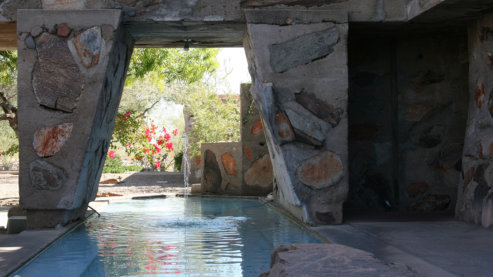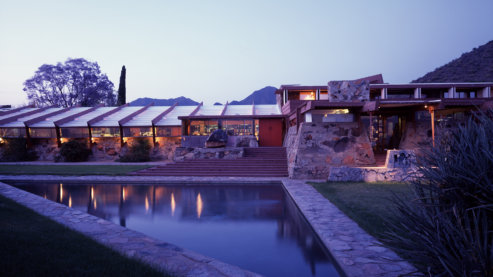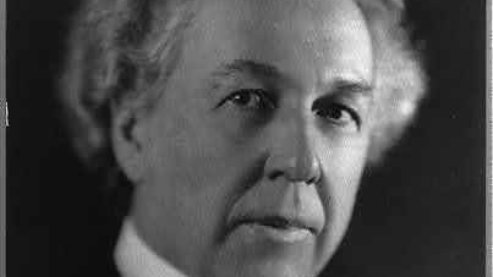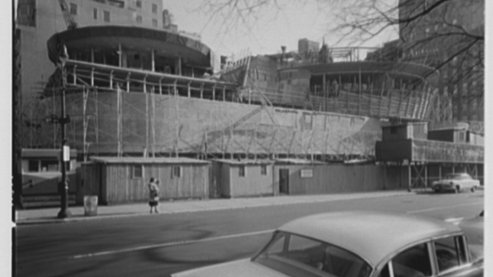The Guggenheim: Critical Response

Magazine of Art, January 1946
“The Modern Gallery: For the Solomon R. Guggenheim Foundation: New York City”
By Frank Lloyd Wright
For the first time in the history of architecture a true logarithmic spiral has been worked out as a complete plastic building: a building in which there is but one continuous floor surface: not on a separate floor slab above another floor slab, but one single, grand, slow wide ramp, widening as it rises for about seven stories—a purely plastic development of organic structure. If pulled from the ground and tossed away the whole building would bounce intact....
For the first time, purely imaginative paintings, regardless of the representation of any natural object, will have appropriate, congenial environment suited to their character and purpose as harmonious works of art for the eye as music is for the ear.
© 1946, American Federation for the Arts
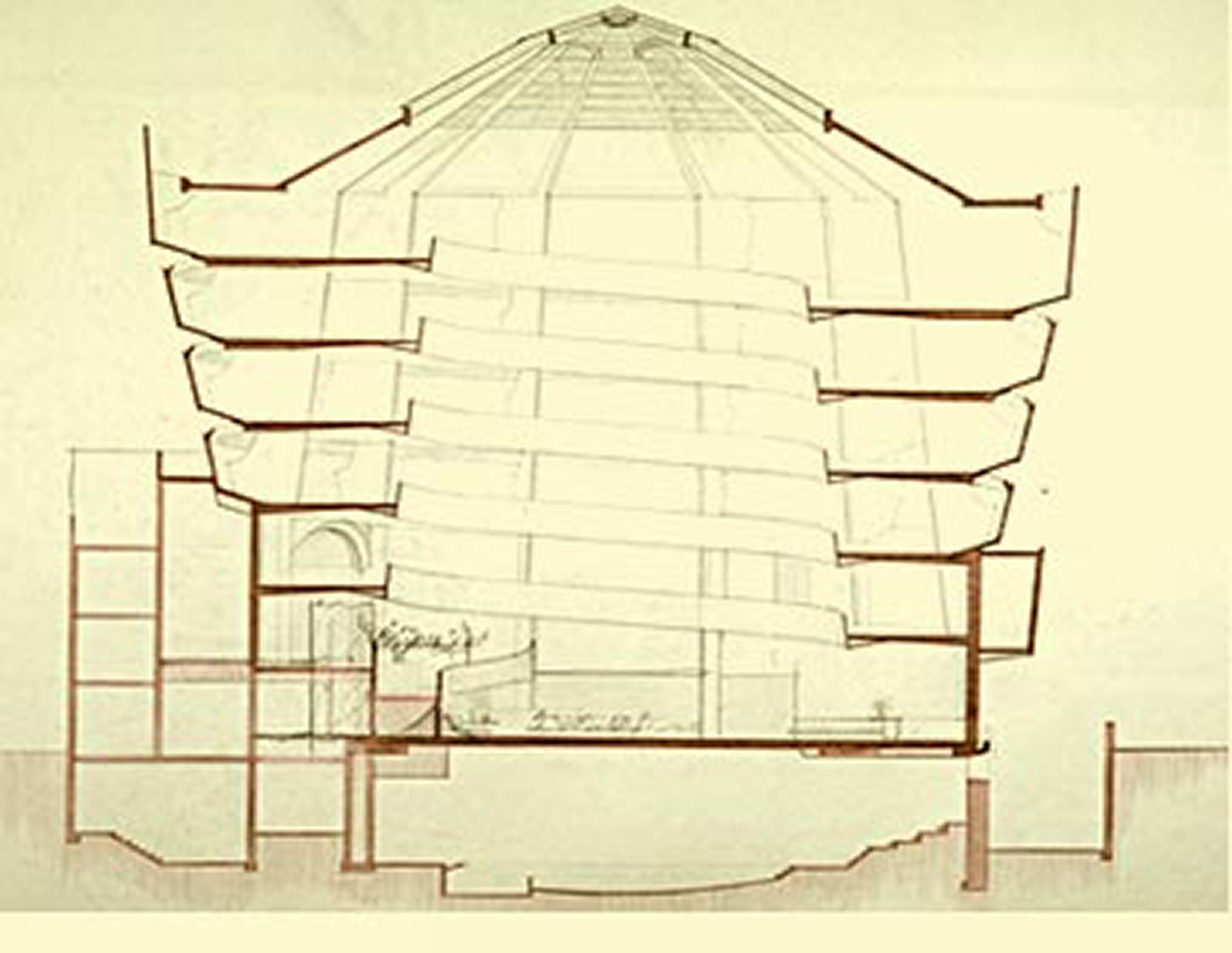
New York Times Magazine, October 25, 1959
“That Museum, Right or Wrong?”
By Anna Louise Huxtable
Ever since Frank Lloyd Wright’s controversial Solomon R. Guggenheim Museum began to take shape on upper Fifth Avenue, New Yorkers have been playing a guessing game, “What Is It?” The massive, circular concrete building has been likened to an inverted cupcake, a washtub without handles, a giant Jello-mold, and the last outpost of the Maginot Line. Now the museum has been opened, but far from solving the riddle, the unveiling has only added fuel to the fiery debate, and the argument promises to grow hotter on all fronts.
According to all advisements and pronouncements, the late Mr. Wright’s unconventional architecture is a museum of the arts—specifically, of the more advanced painting and sculpture of the twentieth century.
“A museum,” says the dictionary, “is a building in which are preserved and exhibited objects of permanent interest in the arts or sciences.”
“A museum,” said Wright, a man who made his own definitions, “is an organic building where all is one great space on a single continuous floor.” The Guggenheim, he explained, was to be an unusual container for an unusual collection, and by “organic” he meant that it would grow simply and logically out of the nature of its materials, “like a tree,” or, in this case, like a sort of snail, with a circular ramp spiraling upward around an open court, crowned by a dramatic skylight.
© 1959 by The New York Times. Reprinted by permission.

New York Times, October 21, 1959
“Wright Vs. Painting: A Critique of Guggenheim Museum Finds Design Defeats Its Function”
The paintings project from the wall on long metal arms attached to the centers of their backs (Mr. Sweeney’s idea, not Wright’s), seeming to float in space, dramatically.
They are thus beautifully revealed, but at the expense of the total architectural harmony. They occupy their space so uncomfortably, like intruders, that their clear revelation loses much of its point. One comes again and again to the conclusion that the solution is a tragic compromise, yet that no better compromise could be found.
In addition, the snail-curl is a kind of strait jacket for the visitor. No wandering back and forth from one favorite picture to another. No going from room to room through convenient doors. One is inexorably led from picture to picture and from level to level along the spiral, with only an occasional lucky assist when the elevator is in the right spot...
The new museum is frequently compared to the Pantheon in Rome, sometimes to Hagia Sophia in Istanbul, both also architectural designs of space surmounted by domes and illuminated from them. Those elaborately ornamented buildings are harmonious entities because ornament and architecture are harmonious.
Stripped of its pictures, existing solely as a design, Wright’s building might be a third in the trio. But unfortunately the pictures disfigure the building and the building disfigures the pictures, and in honesty, for this writer at any rate, there is no point in pretending anything else.
© 1959 by The New York Times. Reprinted by permission.
New York Herald Tribune, October 21, 1959
“Guggenheim Museum Is Ready for Public”
By Emily Genauer
That this museum, which has been variously derided during its three years of construction as a giant corkscrew, a washing machine and a marshmallow has also turned out to be the most beautiful building in America, appears beyond question to be the majority opinion of architects, artists, critics and special guests who have been taken through the structure for some weeks now, and who at special previews last night and Monday flowed up and down its broad ramps several thousand strong.
Nobody had imagined that it would be like this. Not the architects who carefully studies the plans when they were first published six years ago. Not the eminent avant-garde artists who in 1956 bitterly protested...Not the museum men all over the country who clucked in sympathy for the director who would be saddled with a building that might be a fine one man exhibit of the work of a master-architect but would inevitably and murderously dominate any display of paintings or sculpture housed in it and permanently cramp his own exhibition plans. Not even the relatively few who believed in Mr. Wright’s genius and insisted that genius must be taken on faith.
© 1959, The New York Herald Tribune.

